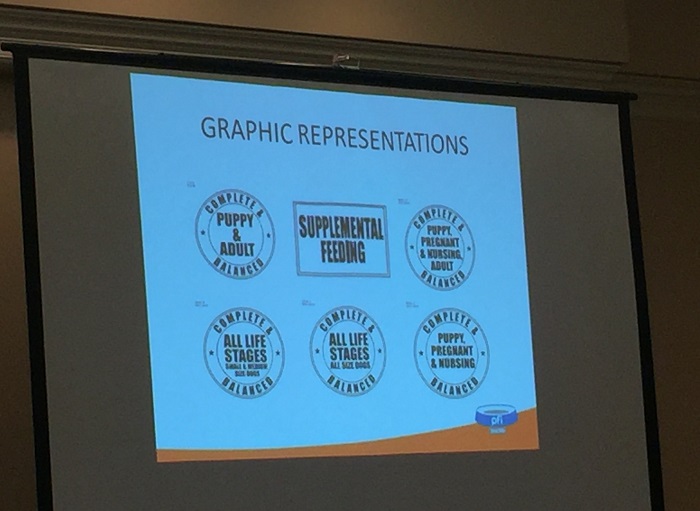A task force convened by the Pet Food Institute (PFI) has been working for more than two years on a comprehensive project to improve the current pet food labeling system.
They were inspired by 2013 consumer research conducted by Mars Petcare showing that pet owners find several sections of the current label confusing – and ignore other sections alltogether.
The PFI task force is divided into four sub-groups, one for each of the areas identified by Mars research and chosen by the Association of American Feed Officials (AAFCO) for improvement: the nutritional adequacy statement, guaranteed analysis, ingredients list, and safety and handling statement.
AAFCO is an organization of local, state and federal agencies charged with the massive task of regulating the sale and distribution of dog and cat foods, as well as large animal and livestock feeds. They will have the final say on which changes become the new standard for pet food labeling.

So far the PFI task force has presented AAFCO with proposals for recommended changes to the nutritional adequacy statement and the guaranteed analysis section.
Currently, pet food manufacturers are required to include a statement of nutritional adequacy somewhere on their packaging. Something along the lines of “Formulated to meet the nutritional levels established by AAFCO feeding trials for all lifestages.”
Not only are these statements relatively meaningless to consumers, they also tend to be buried somewhere on the back of the package.
The sub-group in charge of improving this aspect of the label recommends employing a graphic representation of the statement in plain language clearly visible on the front of the package in addition to the current statement.
For example, a large circular seal on the lower right section of the bag reading something like “complete and balanced for all lifestages” or “complete and balanced for puppies and pregnant and nursing adults”.

According to PetFoodIndustry.com:
“The goal with the proposed language is to get away from terms such as ‘growth’ and ‘maintenance’ that may not be clear to consumers. A product not intended to be complete and balanced, such as pet treats, would bear a symbol, probably in a different shape (perhaps a rectangle), saying ‘supplemental feeding.'”
The confusing Guarateed Analysis section would be changed to something closely resembling the familiar Nutrition Facts boxes located on human foods. The task force also recommends dropping certain terms with negative connotations such as “crude” and expressing guaranteed amounts for each nutrient, rather than “analysis.”

The Nutrition Facts box would include a standard reference unit (one cup for dry pet food, one can or tray for wet or other formats), along with weight or calories per cup or unit. It would also list the percent of calories that come from the major nutrient categories (protein, fat, carbohydrate).
The sub-groups working on the ingredients list and safety and handling statement are yet to present their suggested improvements, and it could be up to three years before the changes are approved through all proper channels, implimented by pet food companies, and available on your local pet food shelf.
Despite the slow progress, these changes and the intentions behind them are a positive sign for the future of the American pet food industry.
H/T to PetFoodIndustry.com
Featured Image via Facebook/Pet Fooled

